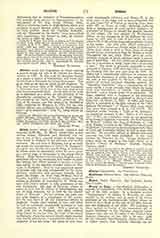

Aelred, Saint, Abbot of Rievaulx, homilist and historian (1109-66). St. Aelred, whose name is also written Ailred, Aethelred, and Ethelred, was the son of one of those married priests of whom many were found in England in the eleventh and twelfth centuries. He was born at Hexham, but at an early age made the acquaintance of David, St. Margaret s youngest son, shortly afterwards King of Scotland, at whose court he apparently acted for some years as a sort of page, or companion to the young Prince Henry. King David loved the pious English youth, promoted him in his household, and wished to make him bishop, but Aelred decided to become a Cistercian monk, in the recently founded abbey of Rievaulx in Yorkshire. Soon he was appointed master of novices, and was long remembered for his extraordinary tenderness and patience towards those under his charge. In 1143 when William, Earl of Lincoln, founded a new Cistercian abbey upon his estates at Revesby in Lincolnshire, St. Aelred was sent with twelve monks to take possession of the new foundation. His stay at Revesby, where he seems to have met St. Gilbert of Sempringham, was not of long duration, for in 1146 he was elected abbot of Rievaulx. In this position the saint was not only superior of a community of 300 monks, but he was head of all the Cistercian abbots in England. Causes were referred to him, and often he had to undertake considerable journeys to visit the monasteries of his order. Such a journey in 1153 took him to Scotland, and there meeting King David, for the last time, he wrote on his return to Rievaulx, where the news of David’s death reached him shortly afterwards, a sympathetic sketch of the character of the late king. He seems to have exercised considerable influence over Henry II, in the early years of his reign, and to have persuaded him to join Louis VII of France in meeting Pope Alexander III, at Touci, in 1162. Although suffering from a complication of most painful maladies, he journeyed to France to attend the general chapter of his Order. He was present in Westminster Abbey, at the translation of St. Edward the Confessor, in 1163, and, in view of this event, he both wrote a life of the saintly king and preached a homily in his praise. The next year Aelred undertook a mission to the barbarous Pictish tribes of Galloway, where their chief is said to have been so deeply moved by his exhortations that he became a monk. Throughout his last years Aelred gave an extraordinary example of heroic patience under a succession of infirmities. He was, moreover, so abstemious that he is described as being “more like a ghost than a man.” His death is generally supposed to have occurred January 12, 1166, although there are reasons for thinking that the true year may be 1167. St. Aelred left a considerable collection of sermons, the remarkable eloquence of which has earned for him the title of the English St. Bernard. He was the author of several ascetical treatises, notably the “Speculum Charitatis,” also a compendium of the same (really a rough draught from which the larger work was developed), a treatise “De Spirituali Amicitia.” and a certain letter to an anchoress. All these, together with a fragment of his historical work, were collected and published by Richard Gibbons, S.J., at Douai, in 1631. A fuller and better edition is contained in the fifth volume of the “Bibliotheca Cisterciensis” of Tissier, 1662, from which they have been printed in P.L., vol. CXCV. The historical works include a “Life of St. Edward,” an important account of the “Battle of the Standard” (1138), an incomplete work on the genealogy of the kings of England, a tractate “De Sanctimoniali de Watton” (About the Nun. of Watton), a “Life of St. Ninian,” a work on the “Miracles of the Church of Hexham,” an account of the foundations of St. Mary of York and Fountains Abbey, as well as some that are lost. No complete edition of Aelred’s historical opuscula has ever been published. A few were printed by Twysden in his “Decem Scriptores,” others must be sought in the Rolls Series or in Raine’s “Priory of Hexham” (Surtees Society, Durham, 1864).
HERBERT THURSTON

